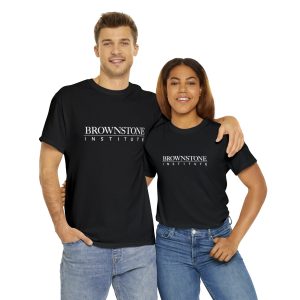There is no more vivid symbol of the Covid-19 pandemic than the widespread use of face masks. Surveys usually show a high degree of compliance to mask mandates (see here and here ). In my home country of Brazil, this is something that can be verified empirically by anyone who takes to the streets of our main cities. This level of compliance occurs, despite the often contradictory information about mask efficacy in preventing infection by respiratory viruses.
At the beginning of the pandemic, medical authorities came to the public to contraindicate the community use of masks, claiming that those are needed only by health workers. But something changed in April 2020, as the authorities went from “we do not recommend” to “not only recommend, but also command” the use of masks by all people in all public spaces.
There are many open questions about the actions taken in response to the pandemic, and, in my view, a most relevant one is whether the mandatory use of masks helped mitigate the spread of Covid-19, or if it was just a distraction, which may have even hindered the fight against the pandemic. This last thesis may seem absurd, given the consensus formed by the mainstream media and the health and political authorities on the importance of masks as a tool to curb the transmission of the SARS-CoV-2 virus.
The mask propaganda was so intense that successive directors of the US Centers for Disease Control (CDC) repeatedly overstated their supposed benefits by claiming that masks protect more than vaccines and that they are 80% effective in blocking Covid-19 transmission.
So why did the health authorities radically change their minds about mask wearing in April 2020? The cynical would say that the authorities feared a shortage of masks if they would have told the public to buy masks, leaving health professionals unprotected. This hypothesis is unlikely for two reasons. The first is that from the beginning we were encouraged to use cloth handmade masks that could be sewn by anyone and even be an additional source of income for poor communities.
Who doesn’t remember the authorities posing in black cloth masks?
Another possibility would be that before April 2020 the WHO (World Health Organization) and governments of dozens of countries have all conspired to deceive the entire world. They knew that masks work but chose to put the health of their citizens at risk at a crucial moment.
Needless to say that this absurd conspiracy theory is unlikely. Finally, Ockham’s razor dictates that there is always a simpler and more probable hypothesis. Thus the most likely reason why, at the beginning of the pandemic, the health authorities contraindicated the use of masks was because the vast majority of randomized controlled studies, which are the gold standard of clinical trials, carried out until then had concluded that face masks are mostly ineffective in preventing the transmission of respiratory viruses. Thus until April 2020 the authorities were following the best available scientific evidence.
Throughout the pandemic, several studies preaching about the importance of masks in preventing transmission have been published, but most of them were the result of tests carried out under laboratory conditions or observational studies. In the former type of study, the effectiveness of the masks is evaluated in the laboratory, usually using mannequins (who do not speak, gesture, scratch or repeatedly touch the face/mask and do not get sick) wearing well-fitting masks. We may call these studies ‘in vitro tests.’
Similarly, potential new drugs are tested in vitro and are sometimes shown to be highly effective under these conditions, but when evaluated in in vivo clinical trials they often prove to be useless. In fact, more than 90% of drugs tested by the pharmaceutical industry in clinical trials do not pass the first phase of testing.
Similarly, under laboratory conditions some masks efficiently filter viral particles, suggesting that they are effective in controlling viral transmission. Though we do learn something from these in vitro trials (also called mechanistic experiments), they cannot predict what would happen in human populations in the real world. There is another type of in vitro experiment, which aims to study indirectly, or with the help of surrogates, the pattern of viral dispersion.
For instance, my research group showed through a set of experiments using bacteriophages (bacterial viruses) that viral transmission in open environments has an extremely low probability, thus dispensing the use of precautions greater than maintaining a one-meter distance.
In addition to the in vitro experiments, several observational studies that evaluated the efficacy of masks have been published, most of them with positive results. Observational studies are not randomized and some of them do not even have proper control groups. The main problem with this type of study is that their conclusions are prone to error, as they are affected by confounding factors and by extraneous biases.
Confounding factors are those that do not allow us to conclude whether there is a cause-effect relationship. For example, let’s assume a hypothetical trial, in which a researcher wants to study a possible relationship between beer consumption and high blood pressure. Two groups will be formed – a test group, whose members will consume 20 liters of beer a month, and a control group, whose participants should not consume any beer at all. Let’s assume that at the end of the experiment, a correlation was found between the two factors – the ‘beer’ group had higher blood pressure than the control group.
Unless the two groups have been randomized, we will not be able to say whether the effect found was due to beer consumption, or to a higher frequency of potbellies in the beer group, different degrees of physical exercises, more men than women, differences in age, etc. In any case, the list of putative confounding factors is very long.
The most that observational studies can say is that there is some kind of correlation between the use of masks and viral transmission, without indicating a cause-effect relation. Furthermore, observational studies tend to be more affected by unconscious biases on the part of the researcher and participants.
Indeed, there are many more observational studies in favor of masks than those that do not support their use. Now, if most randomized controlled studies have shown that masks do not significantly prevent viral transmission, why would observational studies, which are less rigorous, show otherwise? As a rule of thumb in these cases, the better the quality of the study (from a methodological and statistical point of view), the smaller the effect.
Two randomized controlled trials on Coronavirus transmission have been published thus far. One of them was carried out in the summer of 2020 in Denmark. The conclusion of this study was unfavorable to the efficacy of masks. On 8/31/2021, a randomized controlled trial, involving 342,126 participants in Bangladesh was published on the internet in a pre-print form. This study has not been yet peer-reviewed. The authors of the study concluded that surgical masks caused an average 11% reduction in the level of Covid-19 transmission.
Strangely, the protective effect of masks has not been observed in people under 50 years old. Cloth masks showed no significant reduction in any group. Although the study has not yet been revised, it has been touted by some media as a proof that masks work. Can we really conclude that? Even admitting that the study has no major errors, 11% is such a small difference that it borders on irrelevance.
By way of comparison, some authorities like to equate the use of masks in the prevention of Covid-19 with the use of condoms in the prevention of AIDS. It turns out that condoms reduce the risk of AIDS infection by 95% ( = 20 fold), whereas, according to the Bangladeshi study, the protection afforded by surgical masks was only 11% (1.13 times).
Finally, consider a recently published study , in which researchers carried out, under laboratory conditions, several well-controlled experiments with masks. What did they conclude? First, that efficiency varies greatly. Surgical or cloth masks, which are used by the vast majority of people, provide only 10-12% filtration efficiency. Masks known as respirators are more efficient, but none of them achieve more than 60% filtration, even under optimized laboratory conditions.
The second and most important conclusion is that even relatively low room ventilation reduces the accumulation of viral aerosols, and protects as well as the best available masks (N95 and the like). In other words, ventilating a room is still the best way to prevent Covid-19 transmission.
If instead of the obsession with masks, which, as we have seen, are mostly ineffective in the real world and lead to a false sense of security, there were campaigns to improve ventilation in closed spaces, how many Covid-19 transmission events could have been prevented and how many lives would have been saved? Unfortunately, most authorities chose instead the path of mask mandates, despite the lack of trustworthy evidence.
In general, masking of the general public has been a deadly distraction.
Published under a Creative Commons Attribution 4.0 International License
For reprints, please set the canonical link back to the original Brownstone Institute Article and Author.









